IntMath Newsletter: Eigenvectors, 3D solar system, graphics
By Murray Bourne, 30 Jul 2019
30 Jul 2019
In this Newsletter:
1. New on IntMath: Eigenvalues and eigenvectors
2. Resources: Desmos and 3D simulator
3. Math in the news: News and science
4. Math movies: Graphics and addresses
5. Math puzzle: Tangent circles
6. Final thought: Culture
1. New on IntMath: Eigenvalues and eigenvectors
Eigenvectors are very important in many science and engineering fields, including compuer science. (Google's search algorithm is based on eigenvectors.) It was one of the many topics I learned about as a math student where I could find the answers, but I really had no idea what I'd found, what the concept really meant, or what they were good for.
I wrote some new pages incorporating interactive applets which I hope gives the reader a better idea of what this interesting topic is all about. (It's usually taught at university level, but the mathematics involved is not that challenging - mostly multiplying and adding.)
The applet on this next page allows you to explore the physical meaning and geometric interpretation of eigenvalues and eigenvectors.
Like most matrix operations, it's very easy to make simple mistakes when calculating eigenvalues and eigenvectors.
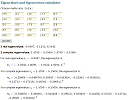 |
This calculator allows you to check your work, and/or to explore what happens with eigenvectors for everything from 2x2 and 3x3 up to 9x9-size matrices. |
You may also be interested in:
How to find eigenvalues and eigenvectors? (outlining the algebraic steps for finding them - this was the only part I learned at university).
Applications of eigenvalues and eigenvectors (which includes a highly simplified description of how Google search works).
2. Resources
(a) Using Desmos to create learning resources
Here's a recent tweet by teacher Liz Caffrey:
I know from my own experience how much richer my understanding of topics is after I've created similar interactive explorations. Doing it with Desmos is really quite easy, and I encourage you (whether student or teacher) to give it a go. You don't need a lot in the way of programming skills.
(b) Harmony of the spheres
This is a 3D simulation of the solar system, built on an "open source gravity simulator".
It also has some "What-if" scenarios. This example shows what would happen if Earth actually orbitted Saturn:
 |
You can drag left-righ, up-down to explore and use the mouse wheel to zoom. Press the "Play" button at the top to animate the scene. |
You can also change the physics parameters, and add masses. It's very nicely done. (Probably best on a laptop.)
3. Math in the news: News and science
Last week marked the 50th anniversary of the moon landings. This was an extraordinary human achievement, but the misguided belief that it was all a hoax continues to grow, fuelled by ignorant people (and bots) through social media. Where and how we find our news, and how we critically examine the sources and conclusions, becomes increasingly important as the growth of fake news has the potential to rip apart our societies.
(a) How do we find out what's happening?
In the US, more people get their news from social media than traditional news sources, while in other countries it's the reverse. See a short summary: Where do people find news on their smartphones?
From the original Digital News Report, by Reuters and University of Oxford: Executive Summary and Key Findings of the 2019 Report
(b) What do we know about science?
Those of us involved in science education would like to think most students graduate with a reasonable general knowledge of the various branches of science, and will have a good grounding in how science actually works. But it appears that is not always the case.
The (US) National Science Board's Science and Engineering Indicators 2018 makes for some sobering reading.
Science and Technology: Public Attitudes and Understanding
Here's a sample of the misunderstandings gleaned from the results of various quizzes.
- Antibiotics kill viruses (which is false): 50% or more got it wrong in most countries
- Human beings developed from earlier species of animals (true): 30 to 50% got it wrong
- Astrology is scientific (false): around 40% (US) thought it was true
- Understanding experimental design: over 50% got it wrong in most countries
No wonder we have the growth of drug-resistant superbugs, rampant species destruction, and climate change deniers.
4. Math Movies
(a) The simple genius of a good graphic
(b) A precise, three-word address for every place on Earth
When I first arrived in Japan where I lived for 4 years, I was amazed at how different their address system was compared to what Iwas used to. Rather than sequential numbers (usually odd on one side and even on the other) along roads, the Japanese system is built around regions and sub-regions of a suburb.
So I found the pretext of this next talk quite interesting.
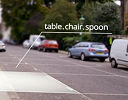 |
Many houses do not have any kind of address system, and to find anyone, you need to rely on local knowledge. Chris Sheldrick has an interesting solution - use three-word addresses! |
I like the basic concept, but surely numbers are more universal? Wouldn't addresses based on latitude and longitude make more sense, especially as that's how our phones know where we are already?
5. Math puzzles
The puzzle in the last IntMath Newsletter asked about the possible dimensions of 2 pencils.
A correct answer with sufficient reasons was submitted by Georgios. Special mention to Nicola who worked on a generalized solution involving circles and ellipses, which she explored using Desmos.
New math puzzle: Tangent circles
Circles that are "mutually tangent" touch at one point only. We have 3 such circles, with centers P, Q, R and radii p, q, r respectively. We are given the lengths PQ = 15, QR = 21 and PR = 14. Find p, q and r.
You can leave your response here.
6. Final thought - culture

Pangolin (image credit)
Living in different countries gives you fresh insights about culture. A lot of the cultural practices that seemed vital to our existence have faded as time goes on, and others we question due to their environmental impacts. While they may not have had much effect hundreds of years ago when there were less people in the world, perhaps some aspects of the following don't make a lot of sense any more?
- Buying SUVs for suburban runabouts
- Living in large houses a long way from work
- Eating whale meat
- Burning paper in the Hungry Ghost Festival
- Consuming rhino horn, pangolin scales and shark fin
- Buying ivory carvings
- Wearing baby seal furs
Maintaining the traditions while minimizing their impacts is surely the best way to move forward.
Until next time, enjoy whatever you learn.
See the 13 Comments below.
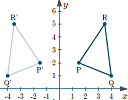
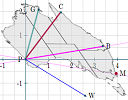
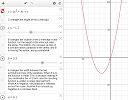
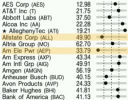

30 Jul 2019 at 4:10 pm [Comment permalink]
Mobile phones are not reliable for location of one's house, at least those with a map from a prominent map publisher, to judge by the mobile-phone users who end up at the wrong address when coming to our place. Latitude and Longitude as an address; would it not perhaps depend on the geoid of the day? As well as the functionality of the satellites, access to a battery charger from time to time and the trust that one's mobile phone has not been stolen or dropped or drowned or forgotten. No, as in the good old days before Microsoft, Apple, the mobile phone, ebay, 24/7 shopping, ATMs and credit cards, life was simpler, less expensive, less fraught and indeed a lot easier, particularly when one was guaranteed the arrival of letters the day after their posting in either the first or second delivery of the day, nails were sold by the pound in a brown paper bag at the ironmonger's and milk was delivered in glass bottles with the cream on top. I'll stick with numbers and the street's name; they work very well.Like clay tablets with Sumerian script for data storage.
30 Jul 2019 at 6:51 pm [Comment permalink]
Misprint PQ=15 and PQ=14
30 Jul 2019 at 6:58 pm [Comment permalink]
@r.m.luther: Thank you so much! I have amended the post - rather too late since the mail has already gone out. Hopefully others will also realise what it was meant to be.
30 Jul 2019 at 11:35 pm [Comment permalink]
You have stated two different values for PQ.
31 Jul 2019 at 9:30 am [Comment permalink]
@Kathy: Sorry about the typo. It should have been PR = 14 at the end (not PQ).
31 Jul 2019 at 2:02 pm [Comment permalink]
4 , 11 and 10
31 Jul 2019 at 2:09 pm [Comment permalink]
I think a small typo crept into the latest problem.
Circles that are "mutually tangent" touch at one point only. We have 3 such circles, with centers P, Q, R and radii p, q, r respectively. We are given the lengths PQ = 15, QR = 21 and PQ = 14. Find p, q and r.
Surely PR=14, not PQ.
Or have I missed something?
Regards
31 Jul 2019 at 2:11 pm [Comment permalink]
@Russell: Indeed, I have a typo and you surmise correctly. I've amended the post.
31 Jul 2019 at 2:27 pm [Comment permalink]
From information given
p+q=15 (1)
p+r=14 (2)
r+q=21 (3)
Subtract (2) from (1)
then q-r=1 (4)
Add (3) and (4)
2q=22
ie q=11
Substitute q=11 in (1)
ie p=4
Substitute q=11 in (3)
ie r=10
2 Aug 2019 at 4:47 pm [Comment permalink]
This looks like a simple linear algebra problem (unless I am missing something!).
PQ=15=p+q
PR=14=p+r
QR=21=q+r
The distance between the centres is the sum of the radii because the circles are tangent.
We can solve this with substitutions or with matrix Ax=b.
1p+1q+0r=15
1p+0q+1r=14
0p+1q+1r=21
A=[1 1 0
1 0 1
0 1 1]
b=[15 14 21]^T
We take the inverse of A, A^-1, and multiply it by the b vector.
The result is a vector with p=4, q=11, r=10.
7 Aug 2019 at 8:29 pm [Comment permalink]
Let PQ = 15, QR = 21 and PR = 14. Let p, q and r be the radii of the circles centered at P, Q and R, respectively. The condition for any three circles to be tangent to each other is that the distance between their centers be equal to the sum of ther radii. Then we have the three equations
p + q = 15; q + r = 21; p + r = 14
the solution of which gives
p = 4, q = 11 and r = 10
11 Aug 2019 at 5:11 pm [Comment permalink]
p=4, q=11, r=10 because:
At points of Tangent radii of both circles are
at 90 deg to tangent, so are in line through centres.
This means PQ =p+q =15, QR= q+r =21, and PR=p+r =14
( Assuming repeat of PQ, in news letter,a typo of PR !)
Then p=15-q. Substitute for p in p+r=14
15-q+r =14. => q= r+1
From q+r =21 substitute r+1 for q
Then r+1+r =21. => r= 10 .... Part Ans
As q=r+1, q=10+1 =11 .... Part Ans
From p+q =15, and q=11
So p = 15-11 =4 .... Part Ans
29 Aug 2019 at 6:17 pm [Comment permalink]
q = 15 - p ......(1)
r = 14 - p ......(2)
add 1,2
q + r = 15 - p + 14 - p
21 = 29 - 2p
p = 4
from (1) q= 11
from (2) r = 10